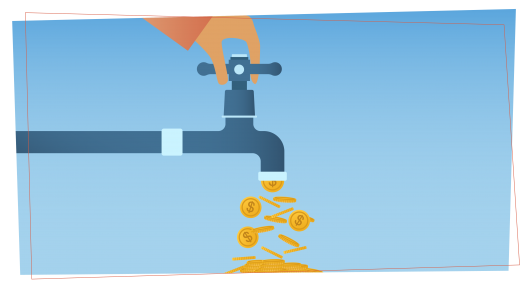Overcoming Seasonal Fluctuations in Your Small Business
Small Business
Original illustrations by Travis Knight from Simple Focus.
I have a friend who runs a small landscaping business. During the winter months, he turns his attention from mowing and pruning to clearing snow and assisting homeowners in winterizing their property. He also takes a vacation during one of the winter months, as opposed to the busy summertime when his services are in higher demand.
Many businesses see more or less consistent cash flow throughout the year, but for others, seasonal peaks and valleys are a way of life. Whether your business has seasonal products, accounting, logistics or changes in the amount of work you receive from your clients, learning to predict and manage these fluctuations is crucial to business sustainability. Fortunately, you can take steps to minimize losses during these periods of inconsistent revenue.
You can take steps to minimize losses during periods of inconsistent revenue.
Cash Flow is Predictable
The first and most important thing you can do to understand your slow periods is to accurately monitor and forecast cash flow. With a correct and consistent prediction of seasonal lulls, you can take action to reduce the impact of these valleys on your annual bottom line.
Forecasting cash flow for a seasonal business is the same as for a year-round business, but actually more predictable. While all businesses must contend with the normal fluctuations of revenue and expenses, seasonal businesses will have an easier time estimating revenue in the off-season (particularly if the business is closed in the off-season). Expenses during this interval can become very predictable indeed, especially if they are cut down to the bare necessities.
Forecasting cash flow for a seasonal business is the same as for a year-round business, but actually more predictable.
Ways To Reduce Loss
There are at least three ways to brace your business for seasonal lulls:
- Spend less money during these slow months by communicating with vendors (possibly reducing payment terms to keep cash in the business).
- Cut unneeded spendings such as subscriptions, equipment rentals, or services that can be temporarily suspended.
- Reduce labor force during slow periods. This may not be a viable option for all small businesses, however, particularly those with a small number of employees (perhaps even just one.)
A better alternative is to diversify goods and services offered during the off-season. This way, you’re not just lowering expenses but you’re bringing cash back into the business. For example, a self-employed photographer who specializes in wedding photography would look for other avenues of income during the slower months, such as photography for holiday cards, “save-the-dates”, or creative projects they might not have time to explore during the busy wedding season.
The Key Is Planning
And the best way to plan is to carefully watch and forecast your cash flow and expected projects. This way, your small business can save some of the cash on hand from your profitable months to offset your expenses during slow months. This is where Pulse comes in handy. By comparing to previous periods of low demand, you can have a reasonable idea of how much revenue to expect from their customers. (Or, what revenue to not expect.)
Your small business can save some of the cash on hand from your profitable months to offset your expenses during slow months.
Pulse is an excellent tool to help give you the knowledge you need to keep your seasonal business moving forward, even when there’s less fuel to keep the engines running.
…


